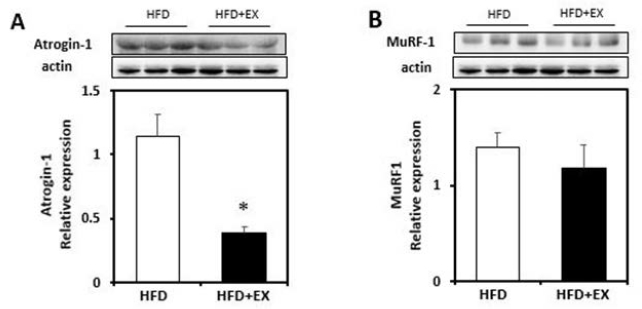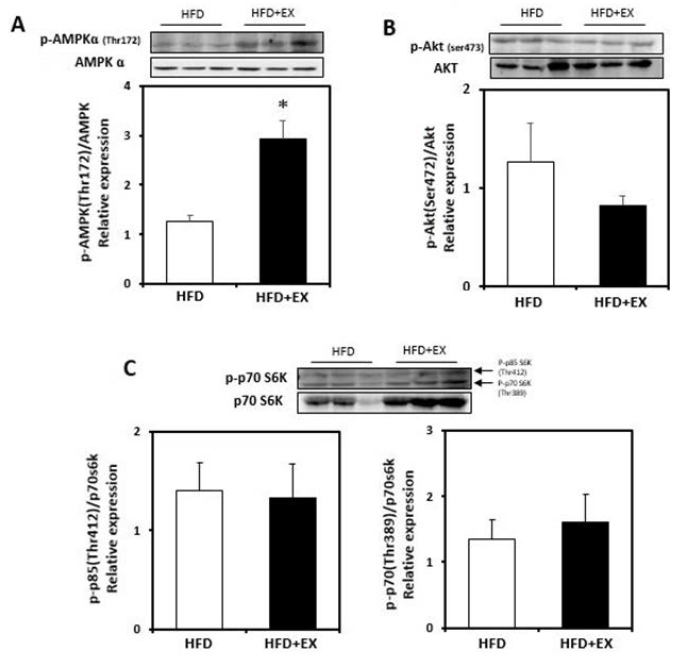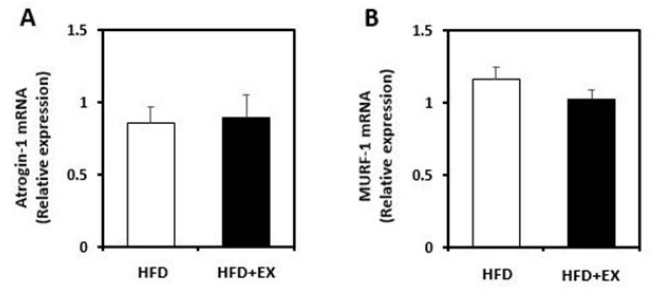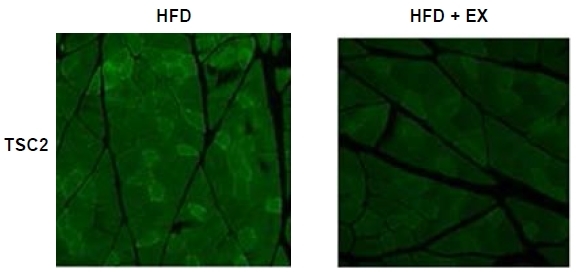1.
Armstrong RB, Phelps RO. Muscle fiber type composition of the rat hind limb. Am J Anat. 1984; 171: 259-72.

Armstrong RB, Phelps RO. Muscle fiber type composition of the rat hind limb.
Am J Anat 1984;171:259-72. PMID:
6517030.
2.
Bodine SC, Stitt TN, Gonzalez M, Kline WO, Stover GL, Bauerlein R, Zlotchenko E, Scrimgeour A, Lawrence JC, Glass DJ, Yancopoulos GD. Akt/mTOR pathway is a crucial regulator of skeletal muscle hypertrophy and can prevent muscle atrophy in vivo. Nat Cell Biol. 2001; 3: 1014-9.


Bodine SC, Stitt TN, Gonzalez M, Kline WO, Stover GL, Bauerlein R, Zlotchenko E, Scrimgeour A, Lawrence JC, Glass DJ, Yancopoulos GD. Akt/mTOR pathway is a crucial regulator of skeletal muscle hypertrophy and can prevent muscle atrophy in vivo.
Nat Cell Biol 2001;3:1014-9. PMID:
11715023.
3.
Bodine SC, Latres E, Baumhueter S, Lai VK, Nunez L, Clarke BA, Poueymirou WT, Panaro FJ, Na E, Dharmarajan K, Pan ZQ, Valenzuela DM, DeChiara TM, Stitt TN, Yancopoulos GD, Glass DJ. Identification of ubiquitin ligases required for skeletal muscle atrophy. Science. 2001; 294: 1704-8.

Bodine SC, Latres E, Baumhueter S, Lai VK, Nunez L, Clarke BA, Poueymirou WT, Panaro FJ, Na E, Dharmarajan K, Pan ZQ, Valenzuela DM, DeChiara TM, Stitt TN, Yancopoulos GD, Glass DJ. Identification of ubiquitin ligases required for skeletal muscle atrophy.
Science 2001;294:1704-8. PMID:
10.1126/science.1065874. PMID:
11679633.
4.
Cunha TF, Moreira JB, Paix├Żo NA, Campos JC, Monteiro AW, Bacurau AV, Bueno Jr CR, Ferreira JC, Brum PC. Aerobic exercise training upregulates skeletal muscle calpain and ubiquitin-proteasome systems in healthy mice. J Appl Physiol. 2012; 112: 1839-46.

Cunha TF, Moreira JB, Paix├Żo NA, Campos JC, Monteiro AW, Bacurau AV, Bueno Jr CR, Ferreira JC, Brum PC. Aerobic exercise training upregulates skeletal muscle calpain and ubiquitin-proteasome systems in healthy mice.
J Appl Physiol 2012;112:1839-46. PMID:
10.1152/japplphysiol.00346.2011. PMID:
22461440.
5.
Drummond MJ, Miyazaki M, Dreyer HC, Pennings B, Dhanani S, Volpi E, Esser KA, Rasmussen BB. Expression of growth-related genes in young and older human skeletal muscle following an acute stimulation of protein synthesis. J Appl Physiol. 2009; 106: 1403-11.

Drummond MJ, Miyazaki M, Dreyer HC, Pennings B, Dhanani S, Volpi E, Esser KA, Rasmussen BB. Expression of growth-related genes in young and older human skeletal muscle following an acute stimulation of protein synthesis.
J Appl Physiol 2009;106:1403-11. PMID:
10.1152/japplphysiol.90842.2008. PMID:
18787087.
6.
Enns DL, Tiidus PM. The influence of estrogen on skeletal muscle: sex matters. Sports Med. 2010; 40: 41-58.

Enns DL, Tiidus PM. The influence of estrogen on skeletal muscle: sex matters.
Sports Med 2010;40:41-58. PMID:
20020786.
7.
Harber MP, Konopka, AR, Douglass, MD, Minchev K, Kaminsky LA, Trappe TA, Trappe S. Aerobic exercise training improves whole muscle and single myofiber size and function in older women. Am J Physiol. 2009; 297: R1452-9.

Harber MP, Konopka AR, Douglass MD, Minchev K, Kaminsky LA, Trappe TA, Trappe S. Aerobic exercise training improves whole muscle and single myofiber size and function in older women.
Am J Physiol 2009;297:R1452-9. PMID:
10.1152/ajpregu.00354.2009.
8.
Hawley JA. Molecular responses to strength and endurance training: are they incompatible? Appl Physiol Nutr Metab. 2009; 34: 355-61.

Hawley JA. Molecular responses to strength and endurance training: are they incompatible?
Appl Physiol Nutr Metab 2009;34:355-61. PMID:
19448698.
9.
Jeong S, Yoon M. Swimming's prevention of ovariectomy-induced obesity through activation of skeletal-muscle PPAR alpha. Int J Sport Nut Exerc Metab. 2012; 22: 1-10.

Jeong S, Yoon M. Swimming's prevention of ovariectomy-induced obesity through activation of skeletal-muscle PPAR alpha.
Int J Sport Nut Exerc Metab 2012;22:1-10.
10.
Konopka AR, Douglass MD, Kaminsky LA, Jemiolo B, Trappe TA, Trappe S, Harber MP. Molecular adaptations to aerobic exercise training in skeletal muscle of older women. J Gerontol A Biol Sci Med Sci. 2010; 65: 1201-7.


Konopka AR, Douglass MD, Kaminsky LA, Jemiolo B, Trappe TA, Trappe S, Harber MP. Molecular adaptations to aerobic exercise training in skeletal muscle of older women.
J Gerontol A Biol Sci Med Sci 2010;65:1201-7. PMID:
20566734.
11.
Konopka AR, Harber MP. Skeletal muscle hypertrophy after aerobic exercise training. Exerc Sport Sci Rev. 2014; 42: 53-61.

Konopka AR, Harber MP. Skeletal muscle hypertrophy after aerobic exercise training.
Exerc Sport Sci Rev 2014;42:53-61. PMID:
10.1249/jes.0000000000000007. PMID:
24508740.
12.
Laplante M, Sabatini, DM. mTOR signaling in growth control and disease. Cell. 2012; 149: 274-93.

Laplante M, Sabatini DM. mTOR signaling in growth control and disease.
Cell 2012;149:274-93. PMID:
10.1016/j.cell.2012.03.017. PMID:
22500797.
13.
Lee CH, Inoki K, Guan KL. mTOR pathway as a target in tissue hypertrophy. Annu Rev Pharmacol Toxicol. 2007; 47: 443-67.

Lee CH, Inoki K, Guan KL. mTOR pathway as a target in tissue hypertrophy.
Annu Rev Pharmacol Toxicol 2007;47:443-67. PMID:
10.1146/annurev.pharmtox.47.120505.105359. PMID:
16968213.
14.
Lovejoy JC, Champagne CM, de Jonge L, Xie H, Smith SR. Increased visceral fat and decreased energy expenditure during the menopausal transition. Int J Obes. 2008; 32: 949-58.


Lovejoy JC, Champagne CM, de Jonge L, Xie H, Smith SR. Increased visceral fat and decreased energy expenditure during the menopausal transition.
Int J Obes 2008;32:949-58. PMID:
10.1038/ijo.2008.25.
15.
Lundberg TR, Fernandez-Gonzalo R, Tesch PA, Rullman E, Gustafsson T. Aerobic exercise augments muscle transcriptome profile of resistance exercise. Am J Physiol. 2016; 310: R1279-87.

Lundberg TR, Fernandez-Gonzalo R, Tesch PA, Rullman E, Gustafsson T. Aerobic exercise augments muscle transcriptome profile of resistance exercise.
Am J Physiol 2016;310:R1279-87. PMID:
10.1152/ajpregu.00035.2016.
16.
Pimenta M, Bringhenti I, Souza-Mello V, Dos Santos Mendes IK, Aguila MB, Mandarim-de-Lacerda, CA. High-intensity interval training beneficial effects on body mass, blood pressure, and oxidative stress in diet-induced obesity in ovariectomized mice. Life Sci. 2015; 139: 75-82.

Pimenta M, Bringhenti I, Souza-Mello V, Dos Santos Mendes IK, Aguila MB, Mandarim-de-Lacerda CA. High-intensity interval training beneficial effects on body mass, blood pressure, and oxidative stress in diet-induced obesity in ovariectomized mice.
Life Sci 2015;139:75-82. PMID:
10.1016/j.lfs.2015.08.004. PMID:
26285177.
17.
Rennie MJ, Tipton KD. Protein and amino acid metabolism during and after exercise and the effects of nutrition. Annu Rev Nutr. 2000; 20: 457-83.

Rennie MJ, Tipton KD. Protein and amino acid metabolism during and after exercise and the effects of nutrition.
Annu Rev Nutr 2000;20:457-83. PMID:
10940342.
18.
Ogura Y1, Naito H, Kakigi R, Ichinoseki-Sekine N, Kurosaka M, Yoshihara T, Akema T. Effects of ageing and endurance exercise training on alpha-actinin isoforms in rat plantaris muscle. Acta Physiol (Oxf). 2011; 202:683-90.

Ogura Y1, Naito H, Kakigi R, Ichinoseki-Sekine N, Kurosaka M, Yoshihara T, Akema T. Effects of ageing and endurance exercise training on alpha-actinin isoforms in rat plantaris muscle.
Acta Physiol (Oxf) 2011;202:683-90. PMID:
10.1111/j.1748-1716.2011.02284.x. PMID:
21518265.
19.
Linden MA, Pincu Y, Martin SA, Woods JA, Baynard T. Moderate exercise training provides modest protection against adipose tissue inflammatory gene expression in response to high-fat feeding. Physiol Rep. 2014; 16: e12071

. Linden MA, Pincu Y, Martin SA, Woods JA, Baynard T. Moderate exercise training provides modest protection against adipose tissue inflammatory gene expression in response to high-fat feeding.
Physiol Rep 2014;16:e12071.
20.
Tiidus PM, Lowe DA, Brown M. Estrogen replacement and skeletal muscle: mechanisms and population health. J Appl Physiol. 2013; 115: 569-578.

Tiidus PM, Lowe DA, Brown M. Estrogen replacement and skeletal muscle: mechanisms and population health.
J Appl Physiol 2013;115:569-578. PMID:
10.1152/japplphysiol.00629.2013. PMID:
23869062.
21.
Watson K, Baar K. mTOR and the health benefits of exercise. Semin Cell Dev Biol. 2014; 36: 130-9.

Watson K, Baar K. mTOR and the health benefits of exercise.
Semin Cell Dev Biol 2014;36:130-9. PMID:
10.1016/j.semcdb.2014.08.013. PMID:
25218794.
22.
Hurley BF. Age, gender, and muscular strength. J Gerontol. 1995; 50A: 41-4.

Hurley BF. Age, gender, and muscular strength.
J Gerontol 1995;50A:41-4.
23.
Atherton PJ, Babraj J, Smith K, Singh J, Rennie MJ, Wackerhage H. Selective activation of AMPK-PGC-1alpha or PKBTSC2-mTOR signaling can explain specific adaptive responses to endurance or resistance training-like electrical muscle stimulation. FASEB J. 2005; 19: 786-8.
Atherton PJ, Babraj J, Smith K, Singh J, Rennie MJ, Wackerhage H. Selective activation of AMPK-PGC-1alpha or PKBTSC2-mTOR signaling can explain specific adaptive responses to endurance or resistance training-like electrical muscle stimulation.
FASEB J 2005;19:786-8. PMID:
15716393.
24.
Wang Y, Pessin JE. Mechanisms for fiber-type specificity of skeletal muscle atrophy. Curr Opin Clin Nutr Metab Care. 2013; 16: 243-50.

Wang Y, Pessin JE. Mechanisms for fiber-type specificity of skeletal muscle atrophy.
Curr Opin Clin Nutr Metab Care 2013;16:243-50. PMID:
10.1097/mco.0b013e328360272d. PMID:
23493017.












